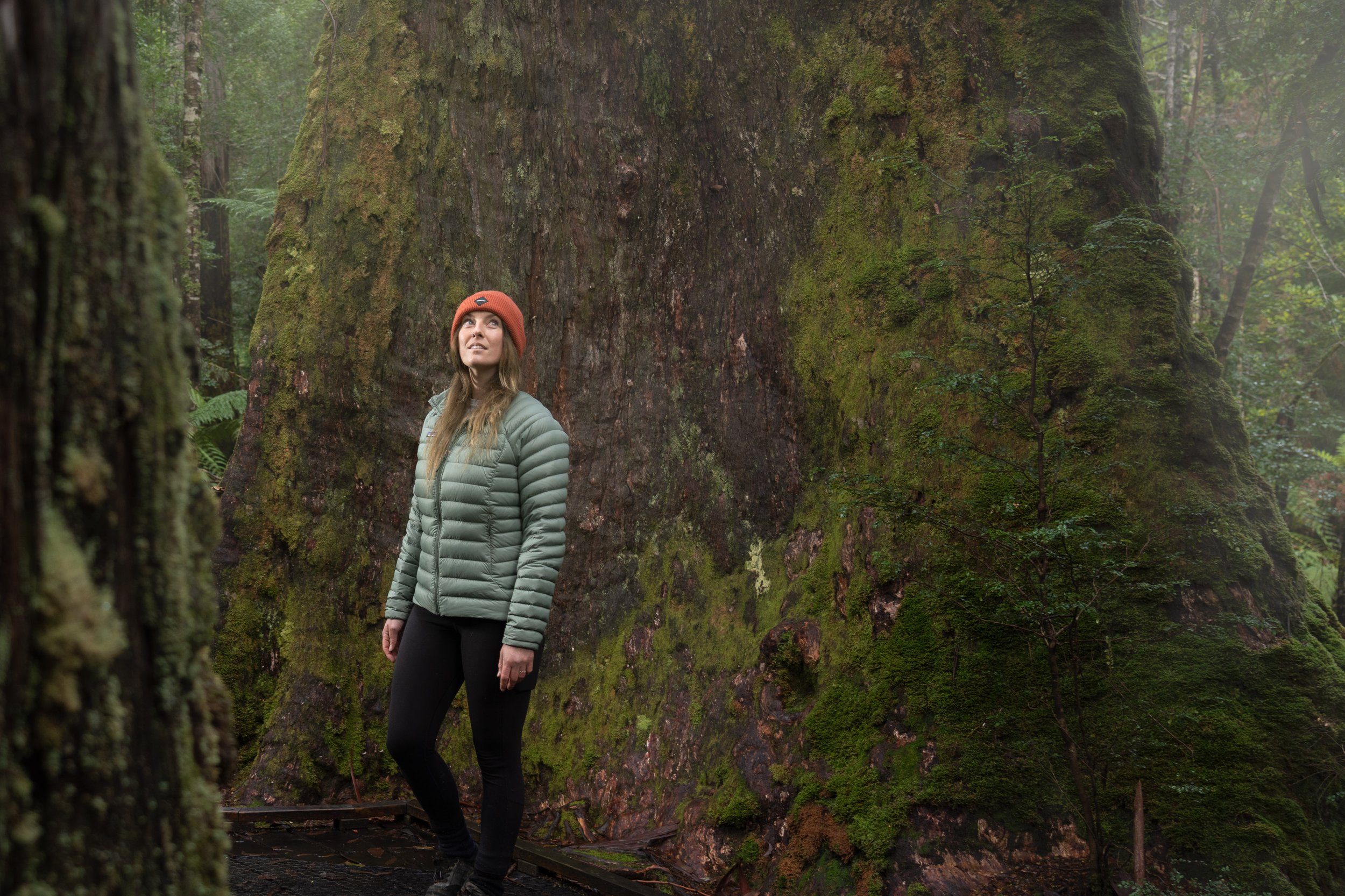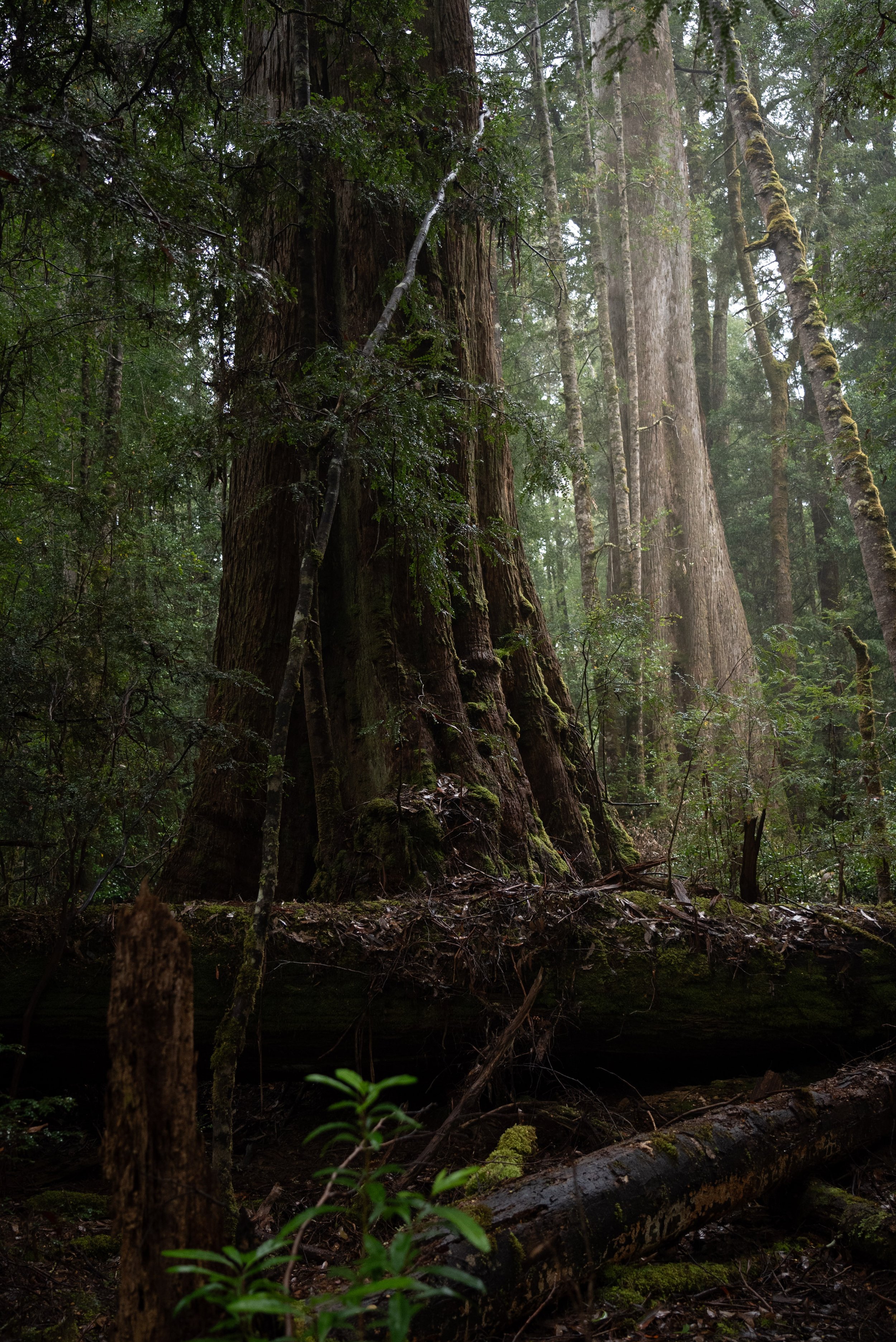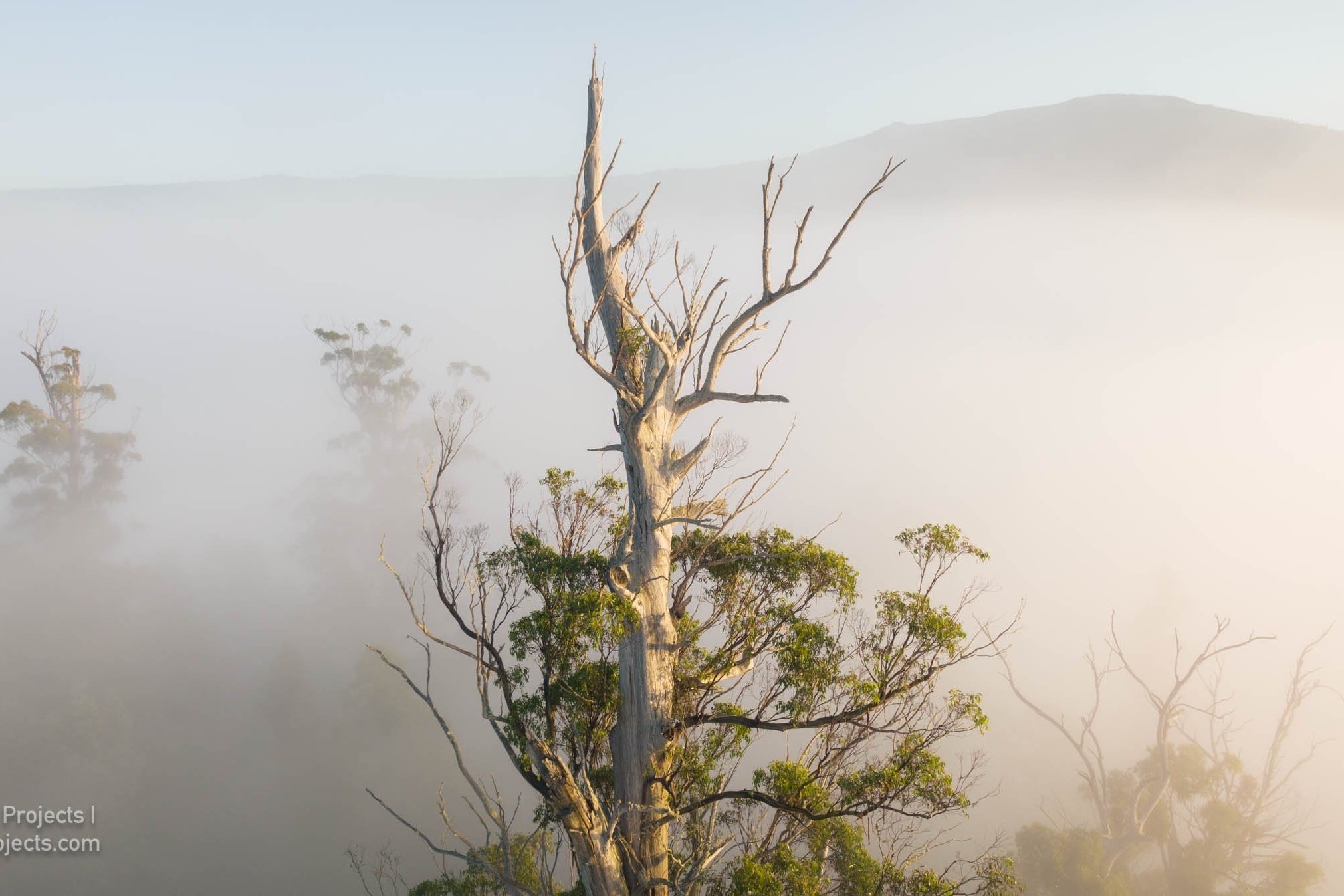
Your Guide to
Tasmania’s
giant trees

Before we get started
we all contribute to an accumulative impact on the trees.
To assist in establishing a considerate and respectful big tree culture in Tasmania we have created these PDF guides.
Here are the basics
-
Phytophthora is a microscopic pathogen that can kill trees. Typically it is transported into new areas on people's footwear and camping equipment. Simply cleaning your shoes can help prevent the spread. However, the most effective control measure is applying a disinfectant like PhytoClean which specifically targets phytophthora spores and destroys them in seconds. You can purchase a small amount of PhytoClean in our shop to use on your travels.
-
Tracks are there to provide access, but they are also very effective environmental control measures. Tracks limit the impact of hundreds of feet that can compact soils which limits nutrient absorption by the trees. Tracks are also very effective at controlling erosion and the spread of phytophthora.
-
We all want a great photo but standing or climbing on the tree base can damage the tree's vascular system that is very close to the surface under the bark. Once the vascular system is damaged no nutrients can be transported and the tree declines in health.
select a site to visit
Positive impact
Tasmania has world-class forests with some of the largest trees in the world. Visitors and local Tasmanians want to visit these incredible places. As Tasmania becomes a world-leading travel destination, it is time for forests to be protected. An alternative economy exists in low-impact, sustainable and profitable Big Tree Tourism and we want to lead the way as an engaged operator.
The Big Tree State will
advocate for Tasmania's forests by...
Creating a respectful and considerate culture around visiting giant trees. Our Visitor Guide PDF details the simple actions each visitor can take to assist in protecting them.
Maintaining this website which is dedicated to showcasing visitor destinations that currently exist. Many sites have informal trails to trees which need improvement.
Creating Landcare and Wildcare volunteer trackwork groups that aim to work with land managers to maintain and upgrade existing trails for better environmental outcomes, tree impact mitigation and increased ease of navigation.
Why doesn't this exist already?
The reason that Tasmania doesn’t utilise its big trees to its full advantage is that it is in direct conflict with native forest logging. For decades, forests have been prioritised for resource extraction rather than a sustainable tourism industry.
The importance of native forest logging to the economy has been overstated for a long time. What’s more is that the industry costs the taxpayer millions of dollars each year. A sustainable Big Tree Tourism industry could easily be developed and replace this outdated, unpopular and destructive industry.
The costs of developing the sites listed in our report represent a fraction of the millions of dollars that the state owned logging agency loses each year. Yet the environmental, economic and social benefits to the regional communities would be significant. It would also produce close to as many direct jobs as what’s employed in native forest logging in southern Tasmania.
our report
Our report launched to a packed audience on 29 August 2023. It proposes eight Big Tree Tourism sites which are located in southern Tasmania, where the majority of the state’s big trees are found. These sites have been chosen due to their outstanding quality of trees and are located in the Huon, Styx and Tyenna Valleys.
These eight reserves would cost $745,000 to establish and would significantly boost visitor spending in the region. It is estimated that they could draw 139,000 visitors each year. This would generate $20.2 million for the regional communities and could create an estimated 163 jobs.






